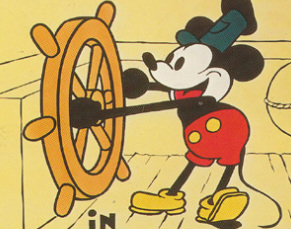Dreamworks Animation- we have all come to know it as one of the competitors to Pixar and in recent years Disney. Its smash-hit franchises including Shrek, Madagascar, Kung Fu Panda, How to Train Your Dragon, and now The Croods have entertained audiences all around the world. It's currently a publicly traded company, but it wasn't always that way. Read on and you'll find how DreamWorks became a phenomenon in animation a really fascinating story.
It all began in the Fall of 1994 when a trio of entertainment players, which consisted of legendary filmmaker Steven Spielberg, Jeffrey Katzenberg, who at the time recently quit his position as an executive for Walt Disney Studios, and film producer and music executive David Geffen, formed a new major Hollywood studio, DreamWorks SKG (the SKG is short for Spielberg-Katzenberg-Geffen). On the heels of the blockbuster success of Disney's The Lion King that summer, an animation division was formed under the new studio. The new studio attracted many artists and employees from Amblimation, the former animation branch of Spielberg's production company Amblin Entertainment, as some of them first joined in 1995 following the completion of their last feature, Balto. When the studio closed down in 1997, the rest of the staff relocated to DreamWorks. DreamWorks' first animated project put into production was an animated adaptation of the 1956 classic, The Ten Commandments, something Katzenberg had always wanted to accomplish (he even tried suggesting this idea to then-CEO of Disney Michael Eisner, but the idea was turned down). When the film opened in Christmas 1998, it was a huge box-office smash, becoming the second non-Disney animated feature to pass the $100 million gross mark (behind Paramount/Nickelodeon's The Rugrats Movie) and established DreamWorks as a competitor to Walt Disney Animation Studios.
It all began in the Fall of 1994 when a trio of entertainment players, which consisted of legendary filmmaker Steven Spielberg, Jeffrey Katzenberg, who at the time recently quit his position as an executive for Walt Disney Studios, and film producer and music executive David Geffen, formed a new major Hollywood studio, DreamWorks SKG (the SKG is short for Spielberg-Katzenberg-Geffen). On the heels of the blockbuster success of Disney's The Lion King that summer, an animation division was formed under the new studio. The new studio attracted many artists and employees from Amblimation, the former animation branch of Spielberg's production company Amblin Entertainment, as some of them first joined in 1995 following the completion of their last feature, Balto. When the studio closed down in 1997, the rest of the staff relocated to DreamWorks. DreamWorks' first animated project put into production was an animated adaptation of the 1956 classic, The Ten Commandments, something Katzenberg had always wanted to accomplish (he even tried suggesting this idea to then-CEO of Disney Michael Eisner, but the idea was turned down). When the film opened in Christmas 1998, it was a huge box-office smash, becoming the second non-Disney animated feature to pass the $100 million gross mark (behind Paramount/Nickelodeon's The Rugrats Movie) and established DreamWorks as a competitor to Walt Disney Animation Studios.
They weren't just into 2D animation, though. That same year they would release their first foray into the world of CGI animation, and that film was Antz.




 RSS Feed
RSS Feed